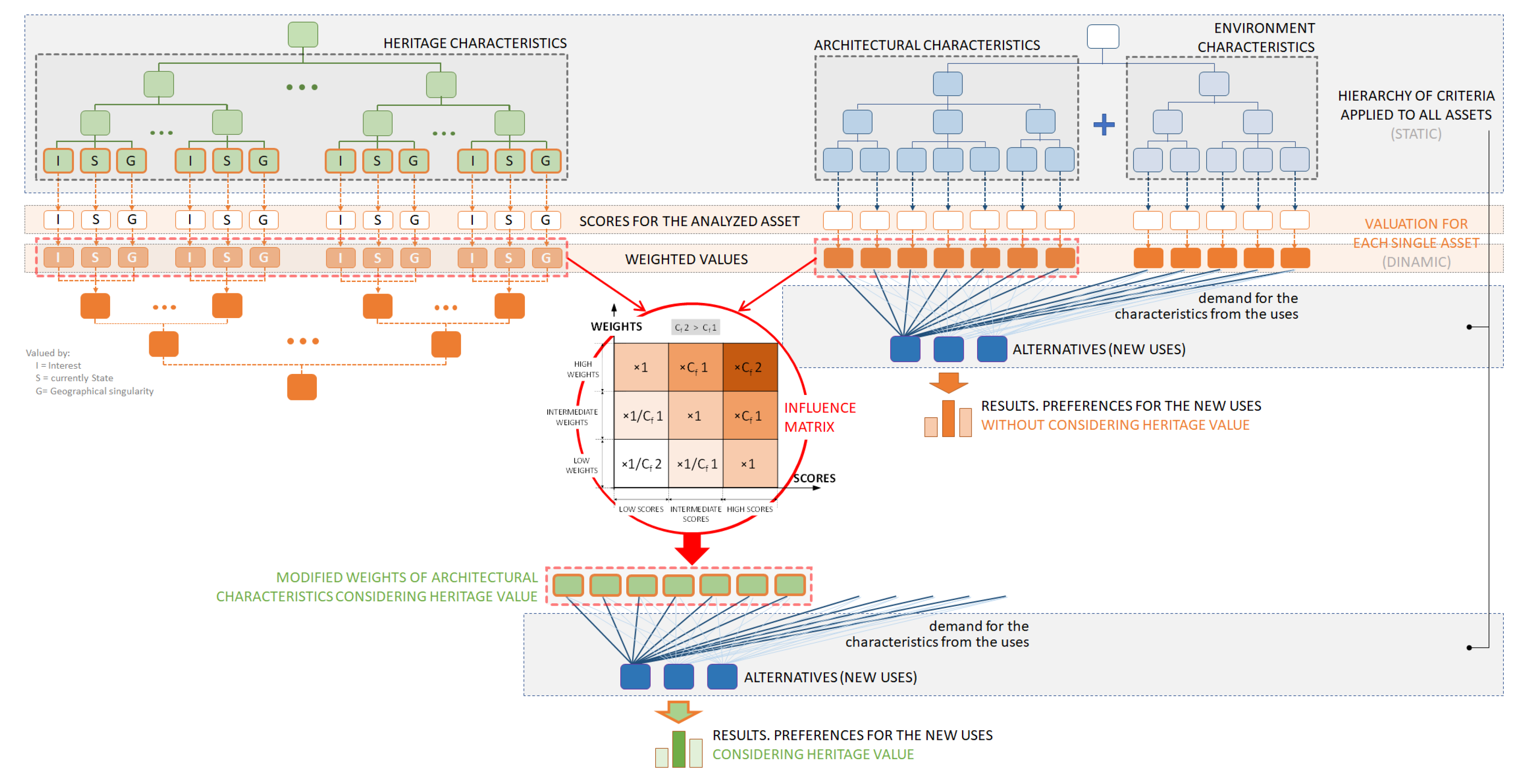Multicriteria Decision Tool for Sustainable Reuse of Industrial Heritage into Its Urban and Social Environment. Case Studies
Abstract
:1. Introduction
2. Materials and Methods
2.1. Multicriteria Methodology
2.2. Case Studies: Industrial Evolution of the City of Madrid and Selected Examples
3. Application to Case Studies
3.1. Complementary Guidelines for the Application of the Methodology in the Study of Specific Assets
3.2. Application of the Methodology to the Boetticher Factory
3.3. Application of the Methodology to the Serrerías Belgas
3.4. Application of the Methodology to the Fábrica de Tipografías de Richard Gans
4. Results and Discussion
4.1. Evaluation of Possible New Uses for the Nave Boetticher
4.2. Evaluation of Potential New Uses for Serrerías Belgas
4.3. Evaluation of Potential New Uses for the Fábrica de Tipografías de Richard Gans
5. Final Comments and Conclusions
Author Contributions
Funding
Acknowledgments
Conflicts of Interest
References
- TICCIH. The International Committee for the Conservation of the Industrial Heritage Web Site. Available online: https://ticcih.org/ (accessed on 22 May 2020).
- Plan Nacional del Patrimonio Industrial—IPCE Instituto…—Ministerio de Cultura y Deporte. Available online: http://www.culturaydeporte.gob.es/planes-nacionales/planes-nacionales/patrimonio-industrial.html (accessed on 27 May 2020).
- Vardopoulos, I. Critical sustainable development factors in the adaptive reuse of urban industrial buildings. A fuzzy dematel approach. Sustain. Cities Soc. 2019, 50, 101684. [Google Scholar] [CrossRef]
- Seduikyte, L.; Grazuleviciute-Vileniske, I.; Kvasova, O.; Strasinskaite, E. Knowledge transfer in sustainable management of heritage buildings. Case of Lithuania and Cyprus. Sustain. Cities Soc. 2018, 40, 66–74. [Google Scholar] [CrossRef]
- Loures, L.; Crawford, P. Democracy in progress: Using public participation in post-industrial landscape (re)-development. WSEAS Trans. Environ. Dev. 2008, 4, 794–803. [Google Scholar]
- Loures, L.; Panagopoulos, T.; Burley, J.B. Assessing user preferences on post-industrial redevelopment. Environ. Plan B Plan. Des. 2016, 43, 871–892. [Google Scholar] [CrossRef]
- Claver, J.; García-Domínguez, A.; Sevilla, L.; Sebastián, M.A. A multi-criteria cataloging of the immovable items of industrial heritage of Andalusia. Appl. Sci. 2019, 9, 275. [Google Scholar] [CrossRef] [Green Version]
- Biel-Ibáñez, P.; Cueto, A. 100 Elementos de Patrimonio Industrial en España; TICCIH España, IPCE, CICEES, Eds.; Calidad Gráfica SL: Zaragoza, Spain, 2011; ISBN 9788493773861. [Google Scholar]
- García Braña, C.; Landrove, S.; Tostóes, A. La Arquitectura de la Industria, 1925–1965; Fundación; Ingoprint S.A.: Barcelona, Spain, 2005. [Google Scholar]
- Claver, J. Methodology for the Analysis and Interpretation of the Assets of the Spanish Industrial Heritage. Application to the Study of the Assets of the Autonomous Community of Madrid; Universidad Nacional de Educación a Distancia: Madrid, Spain, 2016. [Google Scholar]
- Misirlisoy, D.; Günçe, K. Adaptive reuse strategies for heritage buildings: A holistic approach. Sustain. Cities Soc. 2016, 26, 91–98. [Google Scholar] [CrossRef]
- Loures, L.; Heuer, T.; Horta, D.; Santos, R.; Silva, S. Multifunctional clusters in Post-industrial Landscapes: Rising from what’s left. WSEAS Trans. Environ. Dev. 2008, 4, 619–628. [Google Scholar]
- Pont, F.; Llordés, T. Espais Recobrats: Els Nous Usos del Patrimoni Industrial Català; Sapiens Publications: Terrasa, Spain, 2014; ISBN 978-8461701605. [Google Scholar]
- Bottero, M.; Bragaglia, F.; Caruso, N.; Datola, G.; Dell’Anna, F. Experimenting community impact evaluation (CIE) for assessing urban regeneration programmes: The case study of the area 22@ Barcelona. Cities 2020, 99, 102464. [Google Scholar] [CrossRef]
- Knežević, M.N.; Petrović, M.D.; Nedeljković, S.; Mijatov, M.; Radovanović, M.M.; Gajić, M.; Škoda, M. Changes in traditional activities of industrial area toward sustainable tourism development. Sustainability 2019, 11, 6189. [Google Scholar] [CrossRef] [Green Version]
- James Corner Field Operations. Diller Scofidio + Renfro The High Line; Phaidon Press: New York, NY, USA, 2020; ISBN 9781838660772. [Google Scholar]
- Douet, J. Industrial Heritage Re-tooled. The TICCIH Guide to Industrial Heritage Conservation; TICCIH, Ed.; Carnegie Publishing Ltd.: Lancaster, UK, 2012; ISBN 9781859362181. [Google Scholar]
- Loures, L. Post-Industrial Landscapes: Dereliction or heritage? In Proceedings of the 1st WSEAS International Conference on Landscape Architecture (LA’08), Algarve, Portugal, 11–13 June 2008; pp. 23–28. [Google Scholar]
- Claver, J.; García-Domínguez, A.; Sebastián, M.A. Decision-Making Methodologies for Reuse of Industrial Assets. Complexity 2018, 2018. [Google Scholar] [CrossRef] [Green Version]
- Guo, P.; Li, H.; Zhang, G.; Zhang, Y. Exploring critical variables that affect the policy risk level of industrial heritage projects in China. Sustainability 2019, 11, 6848. [Google Scholar] [CrossRef] [Green Version]
- Berta, M.; Bottero, M.; Ferretti, V. A mixed methods approach for the integration of urban design and economic evaluation: Industrial heritage and urban regeneration in China. Environ. Plan B Urban Anal. City Sci. 2018, 45. [Google Scholar] [CrossRef]
- Saaty, R.W. The analytic hierarchy process—what it is and how it is used. Math. Model. 1987, 9, 161–176. [Google Scholar] [CrossRef] [Green Version]
- Saaty, T.L. A scaling method for priorities in hierarchical structures. J. Math. Psychol. 1977, 15, 234–281. [Google Scholar] [CrossRef]
- Saaty, T.; Vargas, L. Models, Methods, Concepts & Applications of the Analytic Hierarchy Process; Springer: New York, NY, USA, 2012. [Google Scholar]
- San-José, J.T.; Losada, R.; Cuadrado, J.; Garrucho, I. Approach to the quantification of the sustainable value in industrial buildings. Build. Environ. 2007, 42, 3916–3923. [Google Scholar] [CrossRef]
- San-José Lombera, J.T.; Garrucho Aprea, I. A system approach to the environmental analysis of industrial buildings. Build. Environ. 2010, 45, 673–683. [Google Scholar] [CrossRef]
- Morkūnaitė, Ž.; Kalibatas, D.; Kalibatienė, D. A bibliometric data analysis of multi-criteria decision making methods in heritage buildings. J. Civ. Eng. Manag. 2019, 25, 76–99. [Google Scholar] [CrossRef]
- Nocca, F. The role of cultural heritage in sustainable development: Multidimensional indicators as decision-making tool. Sustainability 2017, 9, 1882. [Google Scholar] [CrossRef] [Green Version]
- Iyer-Raniga, U.; Wong, J.P.C. Evaluation of whole life cycle assessment for heritage buildings in Australia. Build. Environ. 2012, 47, 138–149. [Google Scholar] [CrossRef]
- Aigwi, I.E.; Egbelakin, T.; Ingham, J.; Phipps, R.; Rotimi, J.; Filippova, O. A performance-based framework to prioritise underutilised historical buildings for adaptive reuse interventions in New Zealand. Sustain. Cities Soc. 2019, 48, 101547. [Google Scholar] [CrossRef]
- Haroun, H.A.A.F.; Bakr, A.F.; Hasan, A.E.S. Multi-criteria decision making for adaptive reuse of heritage buildings: Aziza Fahmy Palace, Alexandria, Egypt. Alex. Eng. J. 2019, 58, 467–478. [Google Scholar] [CrossRef]
- Liu, F.; Zhao, Q.; Yang, Y. An approach to assess the value of industrial heritage based on Dempster–Shafer theory. J. Cult. Herit. 2018, 32, 210–220. [Google Scholar] [CrossRef]
- Okutan, R.S.; Kershaw, T.; Fernandez, M.H.; Coley, D. A socio-mathematical approach to exploring conflicts between energy retrofit and perceived heritage character. Build. Environ. 2018, 138, 11–20. [Google Scholar] [CrossRef]
- Claver, J.; Sebastián, M.A. Aproximación y Propuesta de Análisis del Patrimonio Industrial Inmueble Español; Editorial UNED: Madrid, Spain, 2017; ISBN 978-84-362-7213-0. [Google Scholar]
- Claver, J.; Sebastián, M.A.; Sanz-Lobera, A. Opportunities of the Multicriteria Methods in the Study of Immovable Assets of the Spanish Industrial Heritage. Procedia Eng. 2015, 132. [Google Scholar] [CrossRef] [Green Version]
- Sociedad Estatal de Participaciones Industriales (SEPI) SEPI Web Site. Available online: http://www.sepi.es/es/conozca-sepi/organismos (accessed on 22 May 2020).
- Revilla, F.; Ramos, R. The Industrial Architecture of Madrid; Ediciones La Librería: Madrid, Spain, 2008; ISBN 9788498730227. [Google Scholar]
- Jefatura del Estado. Plan de Urgencia Social de Madrid.-Ley de 13 de Noviembre de 1957 Sobre Plan de Urgencia Social de Madrid; Jefatura del Estado: Madrid, Spain, 1957. [Google Scholar]
- Jefatura del Estado. Ley 121/1963, de 2 de Diciembre, Sobre el Area Metropolitana de Madrid; Jefatura del Estado: Madrid, Spain, 1963. [Google Scholar]
- Ayuntamiento de Madrid. Ordenanzas Municipales Sobre uso Del Suelo y Edificación; Ayuntamiento de Madrid: Madrid, Spain, 1972. [Google Scholar]
- La Nave Madrid. Available online: https://www.lanavemadrid.com/ (accessed on 21 May 2020).
- COAM History Service. Memoria Histórica Para el Proyecto de Rehabilitación de Las Serrerías Belgas de Los Pinares del Paular; COAM History Service: Madrid, Spain, 2006. [Google Scholar]
- La Serrería Belga | Medialab-Prado Madrid. Available online: https://www.medialab-prado.es/medialab/mas-informacion/la-serreria-belga (accessed on 21 May 2020).
- Penela Rodríguez, J.R.; García Moreno, D. Fundición Tipográfica Richard Gans. Historia y Actividad 1881–1975; First Congress on Typography: Valencia, Spain, 2004. [Google Scholar]
- N.I.D.E. Rules | CSD—Consejo Superior de Deportes. Available online: https://www.csd.gob.es/en/csd/facilities/management-public-policies/technical-standards-of-sports-facilities/nide-rules (accessed on 22 May 2020).
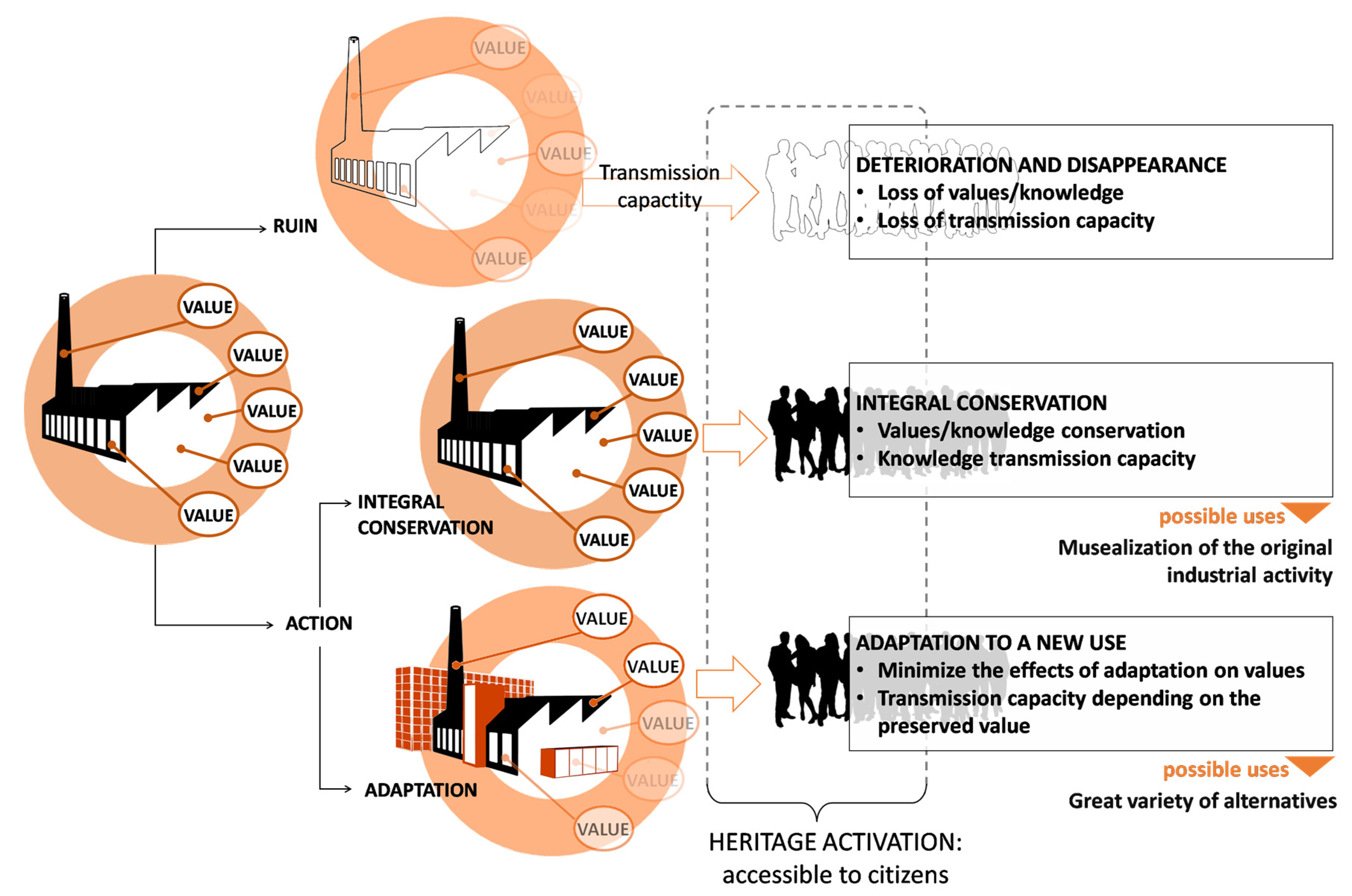

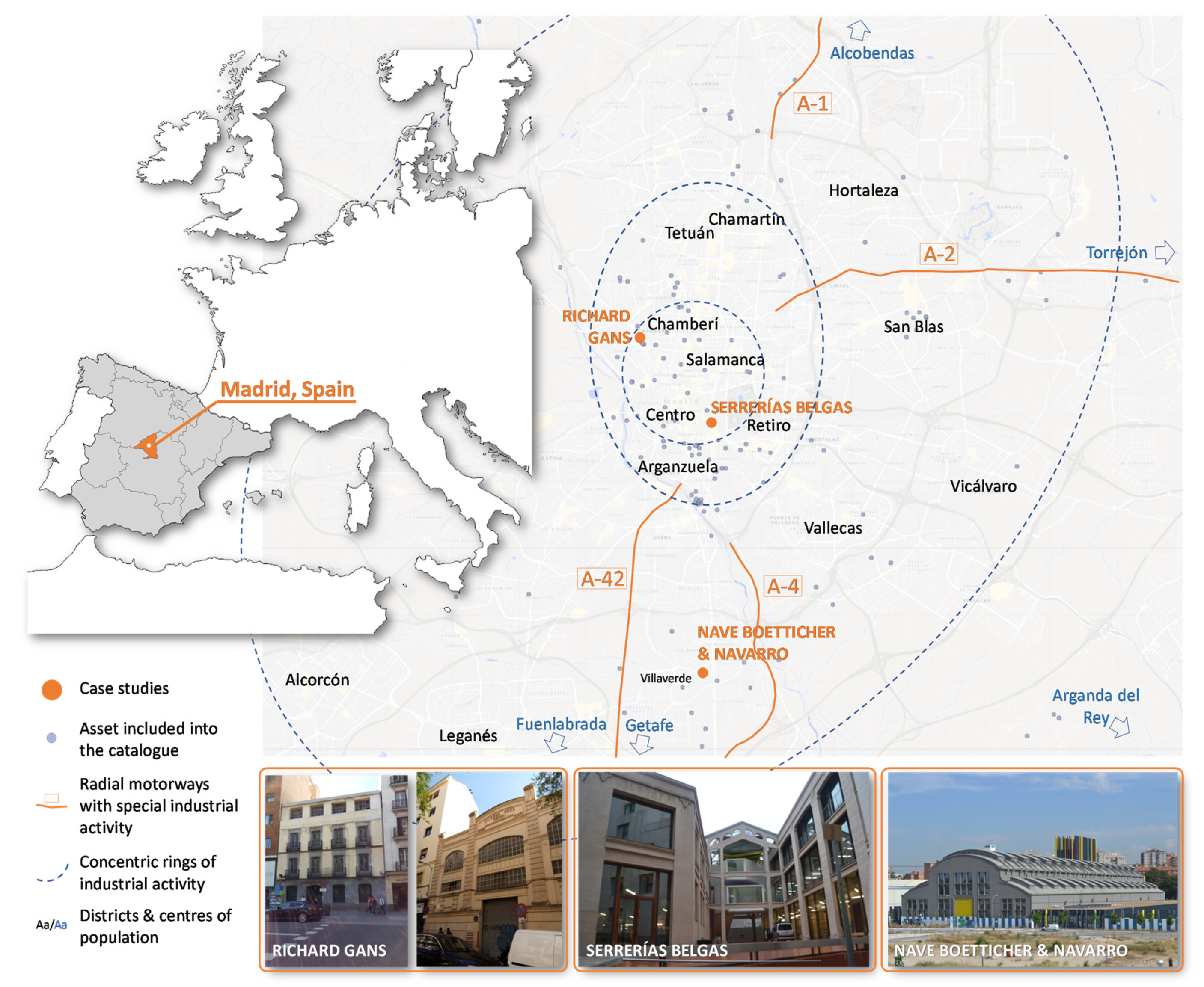
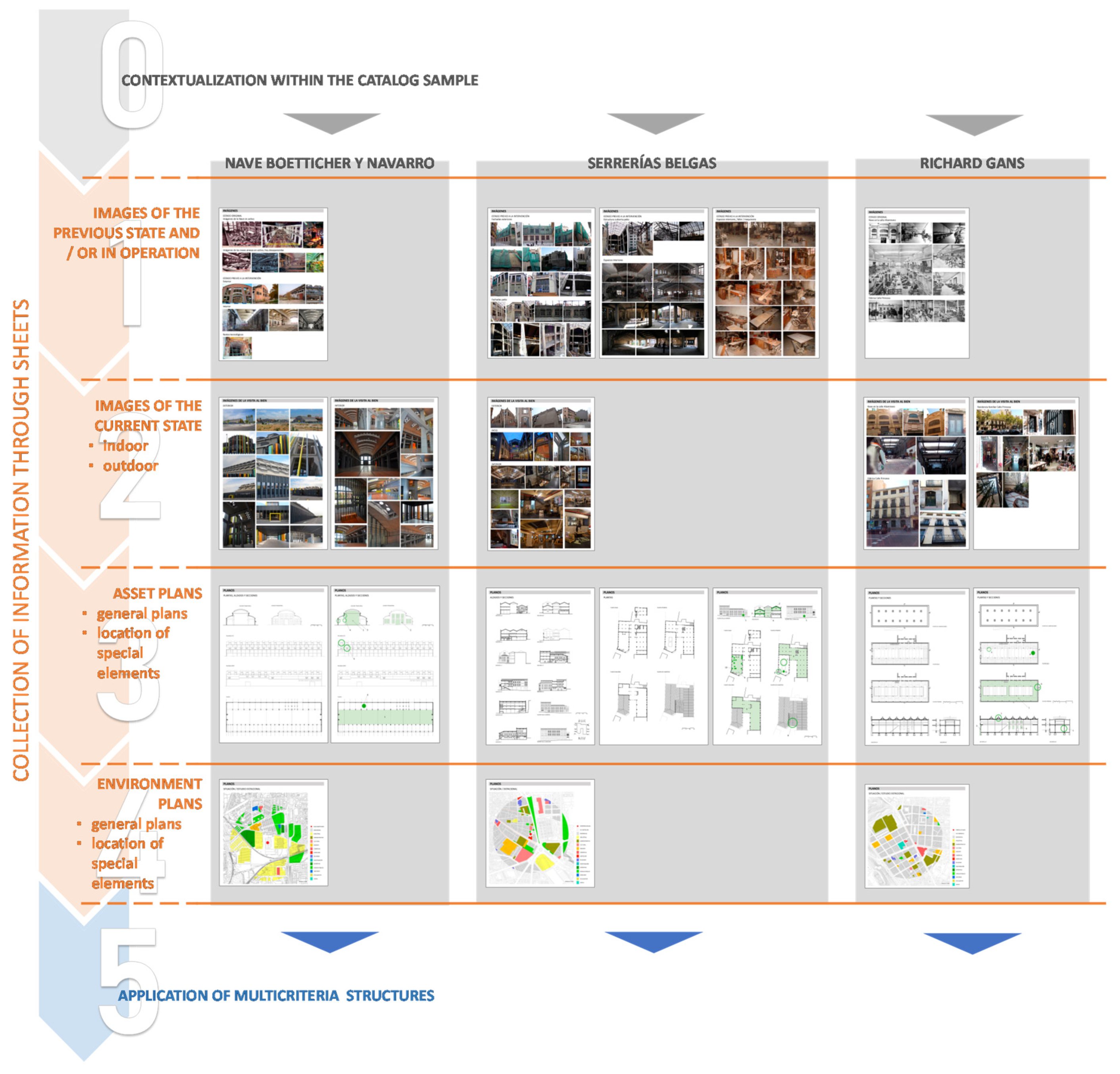
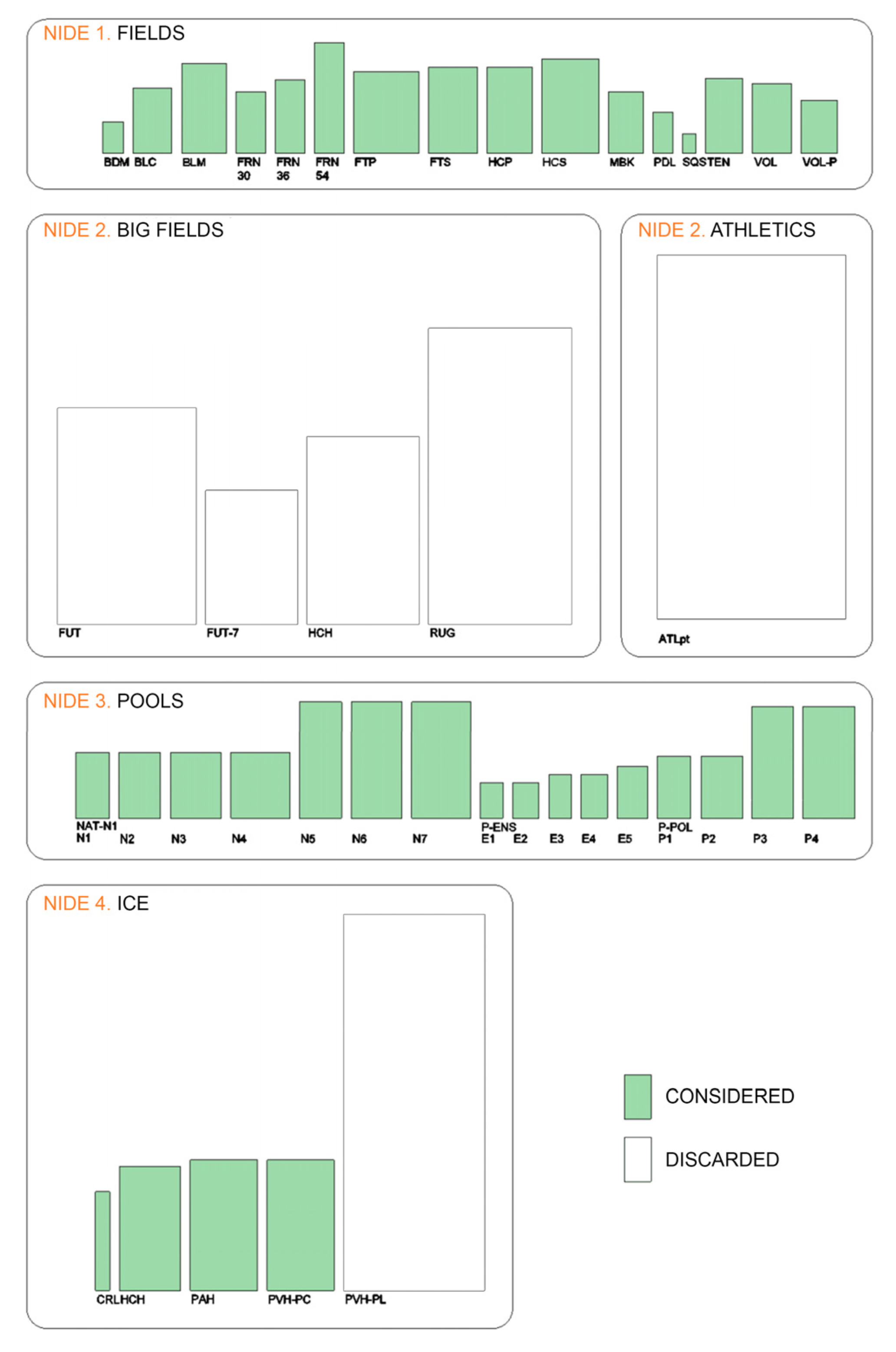
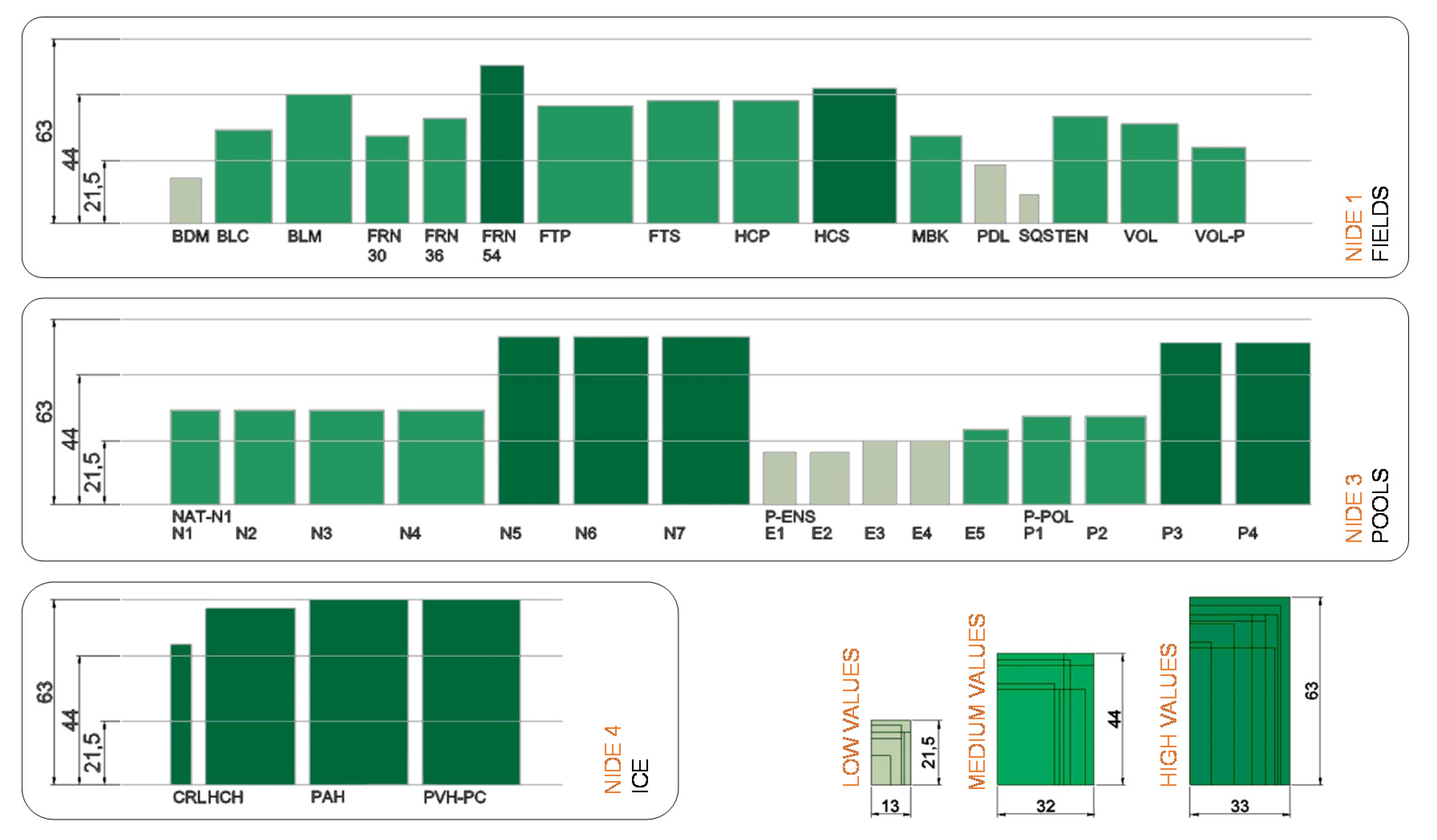
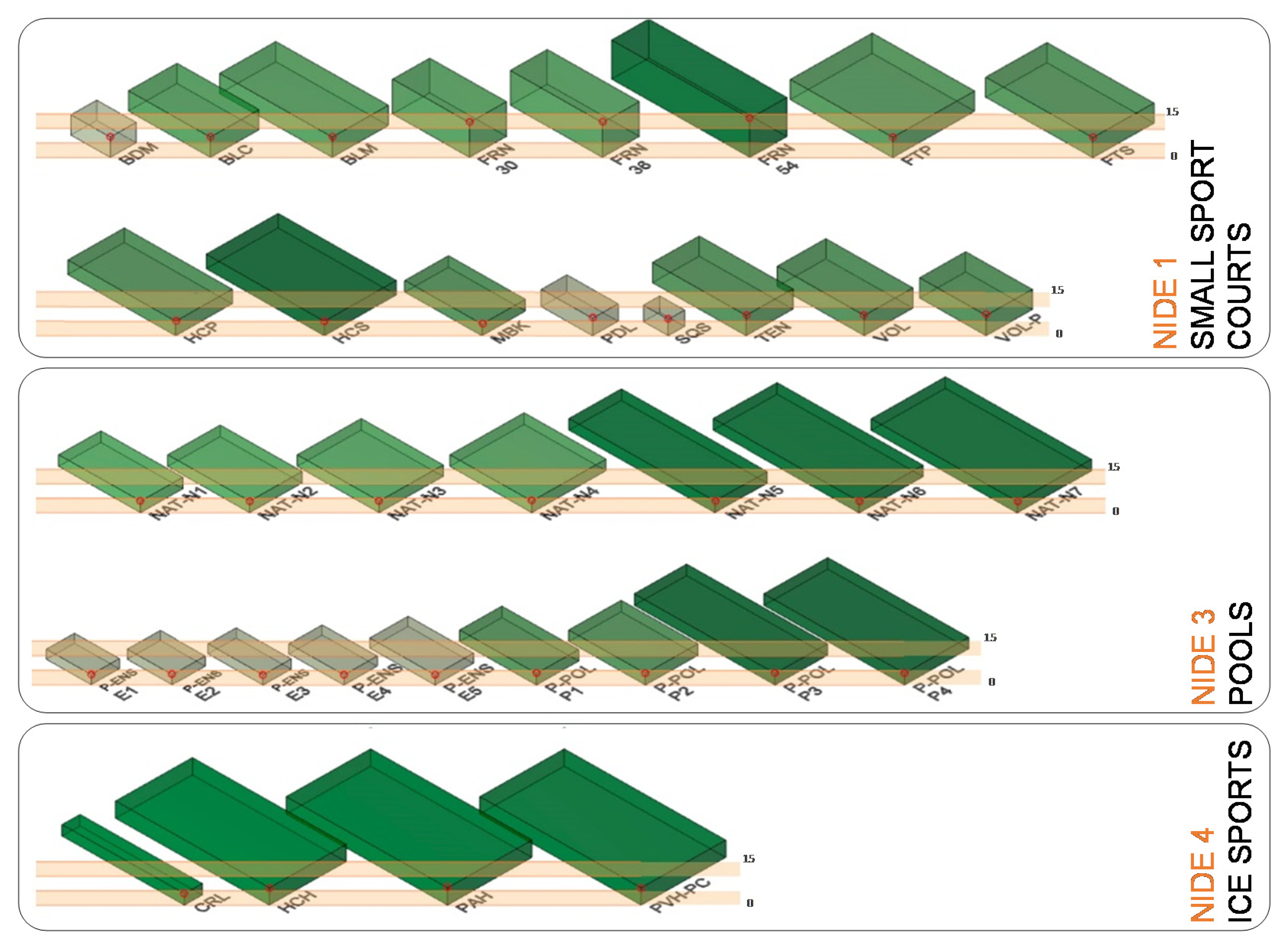
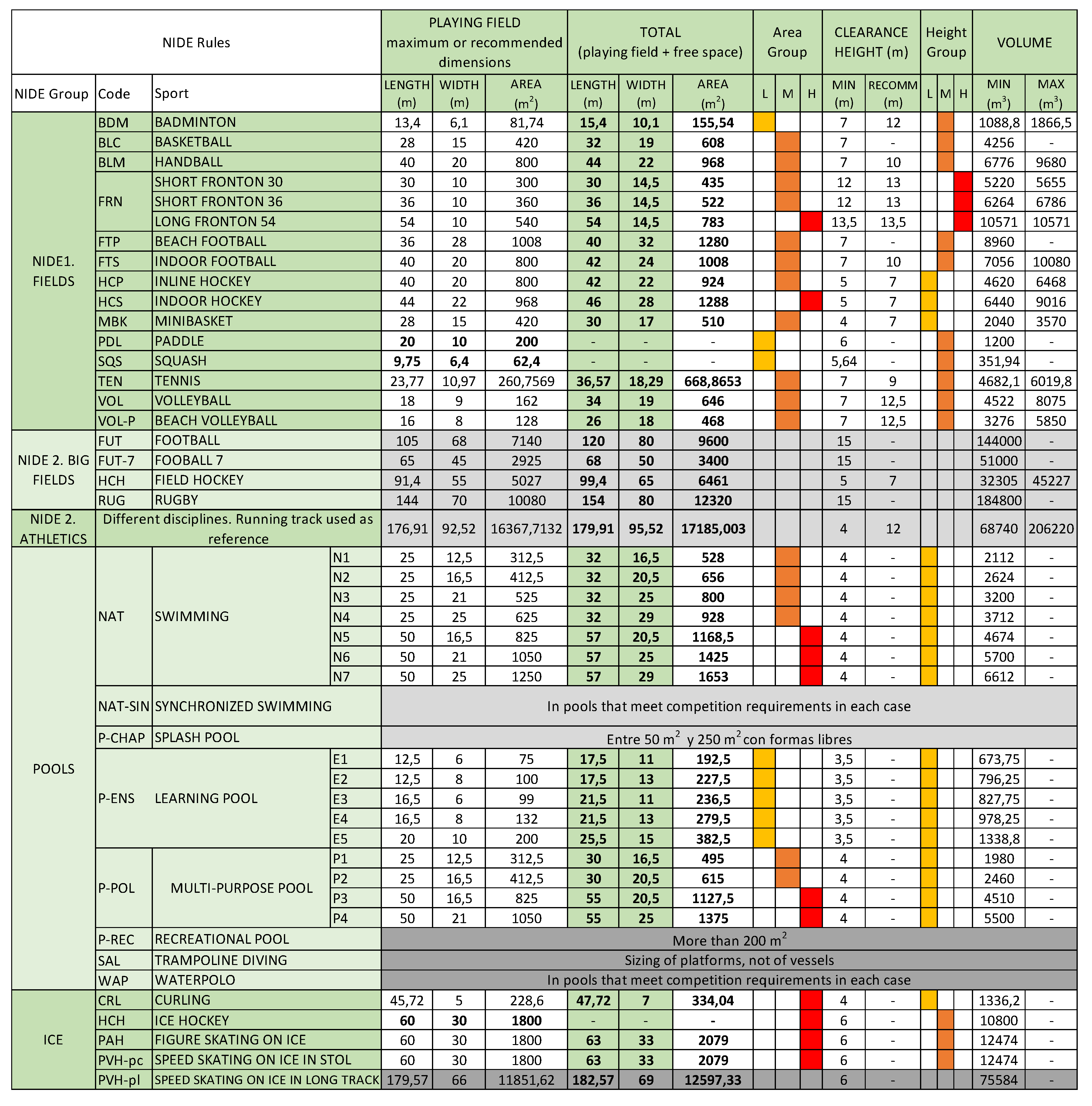
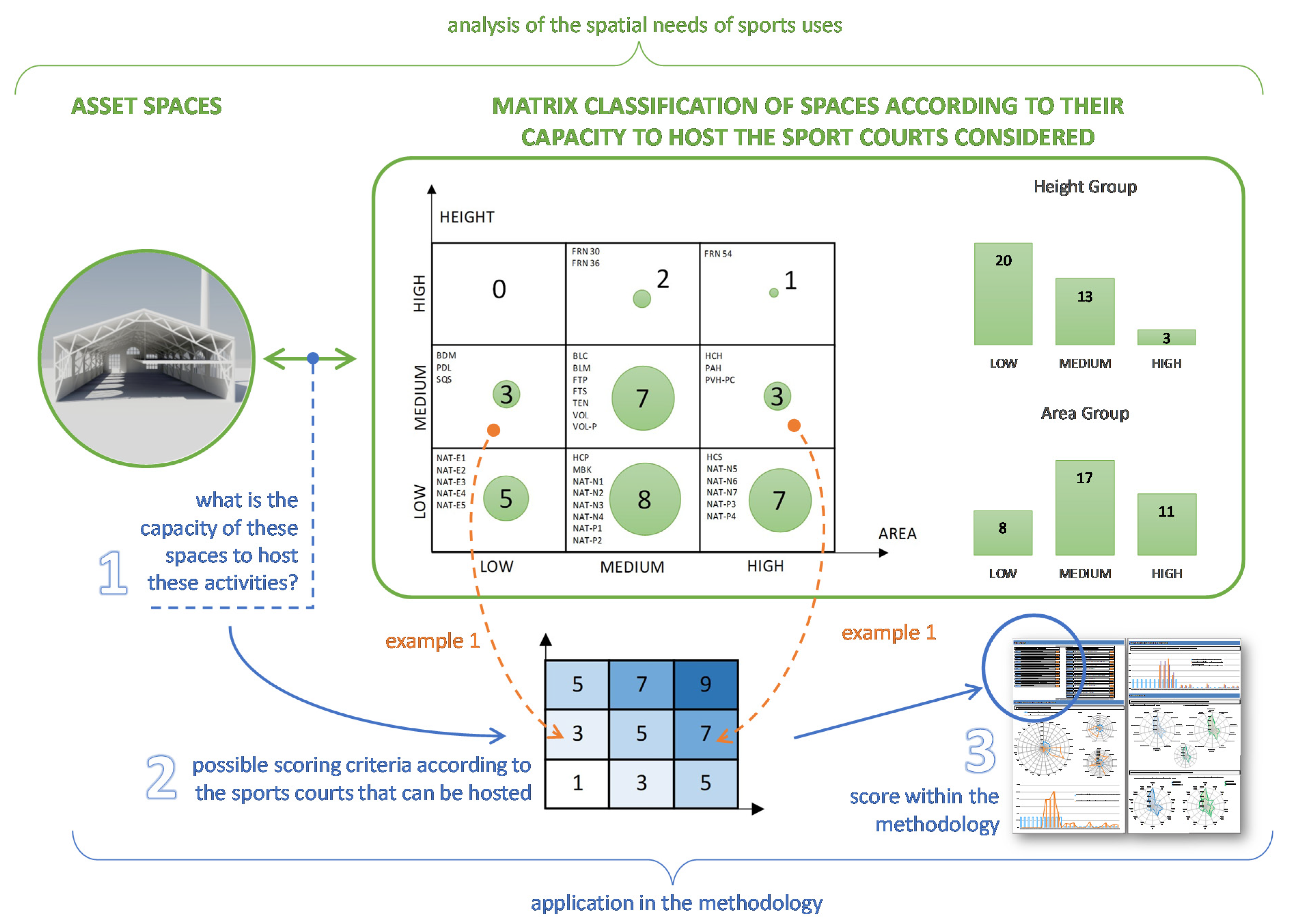
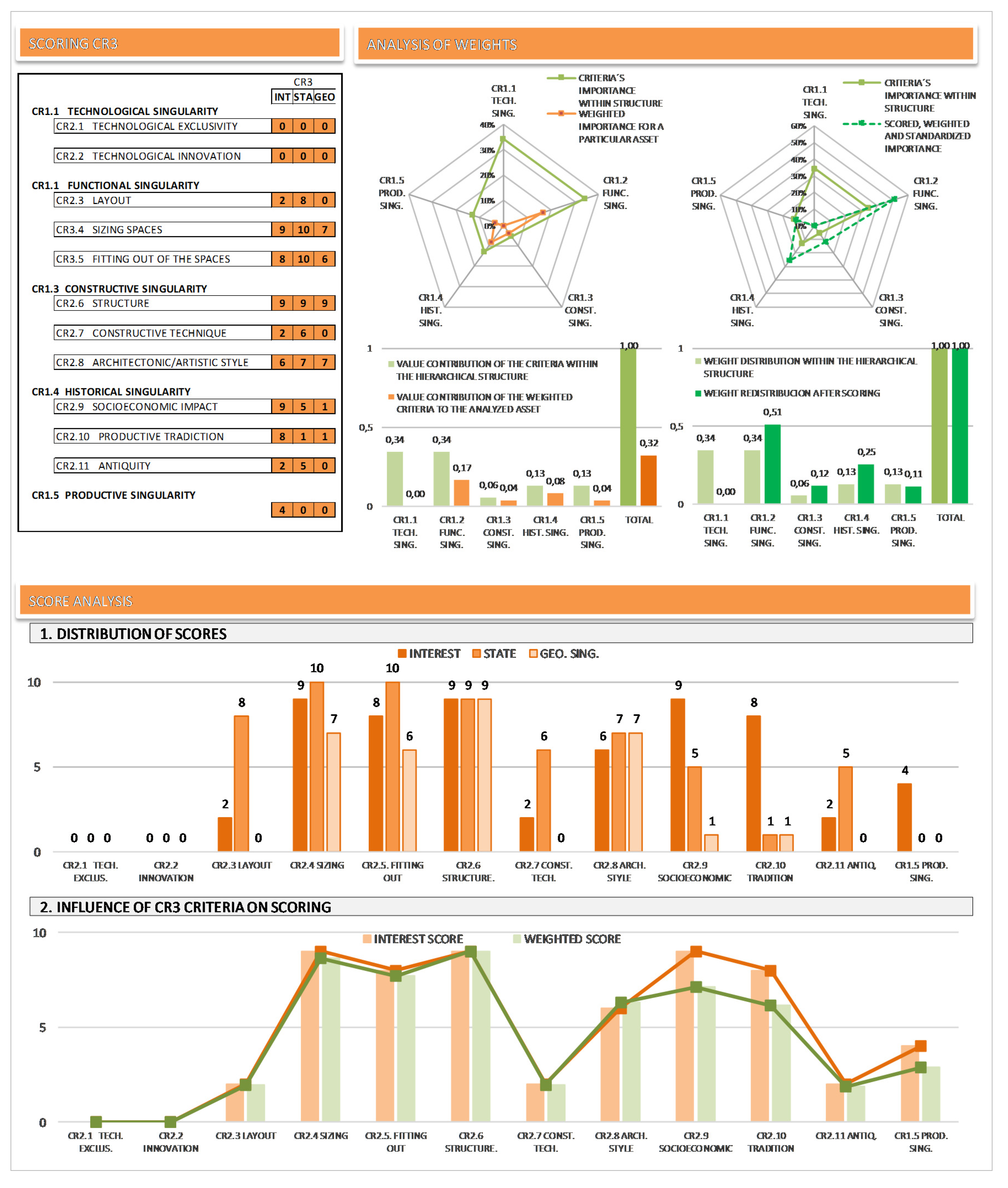
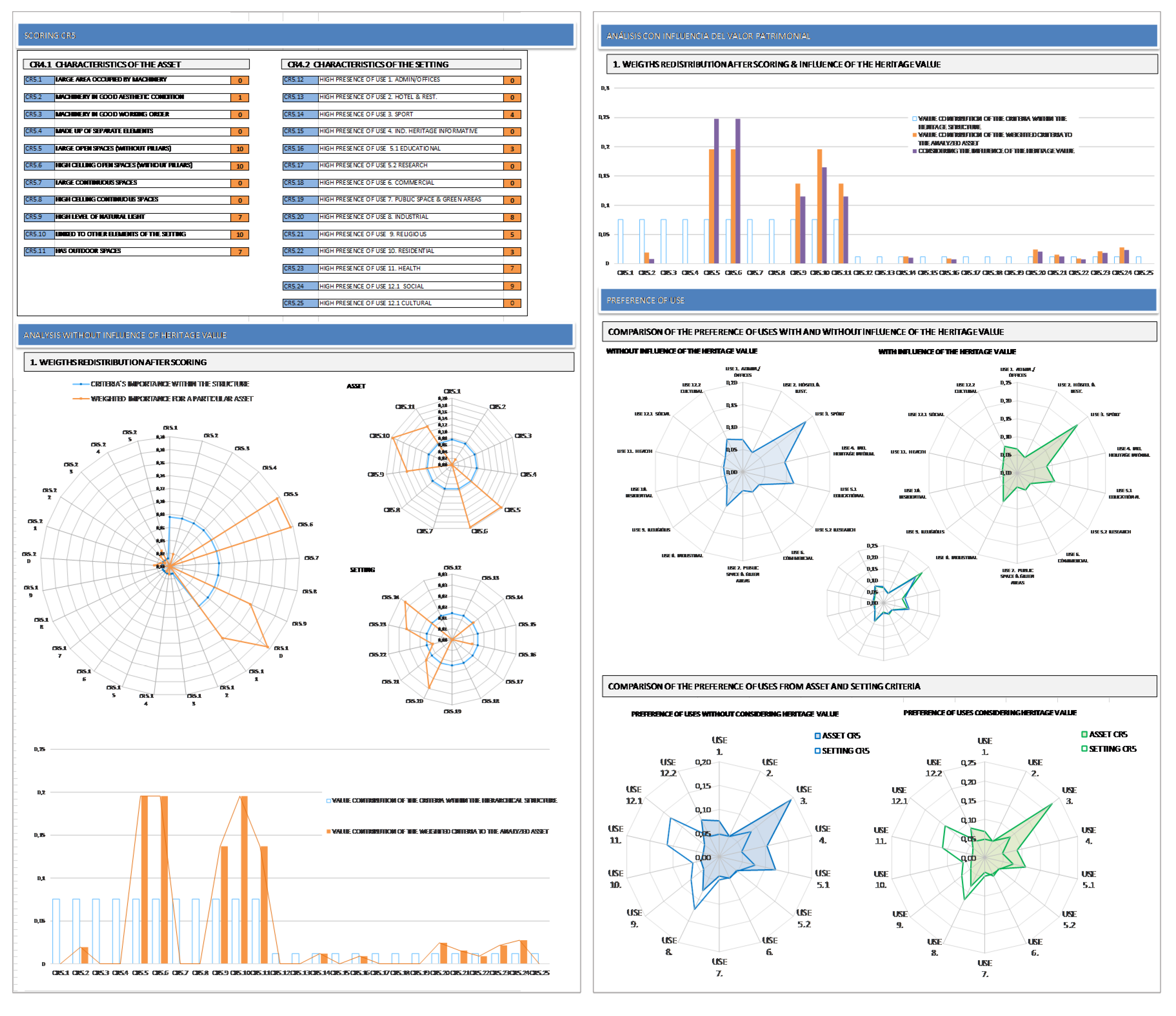
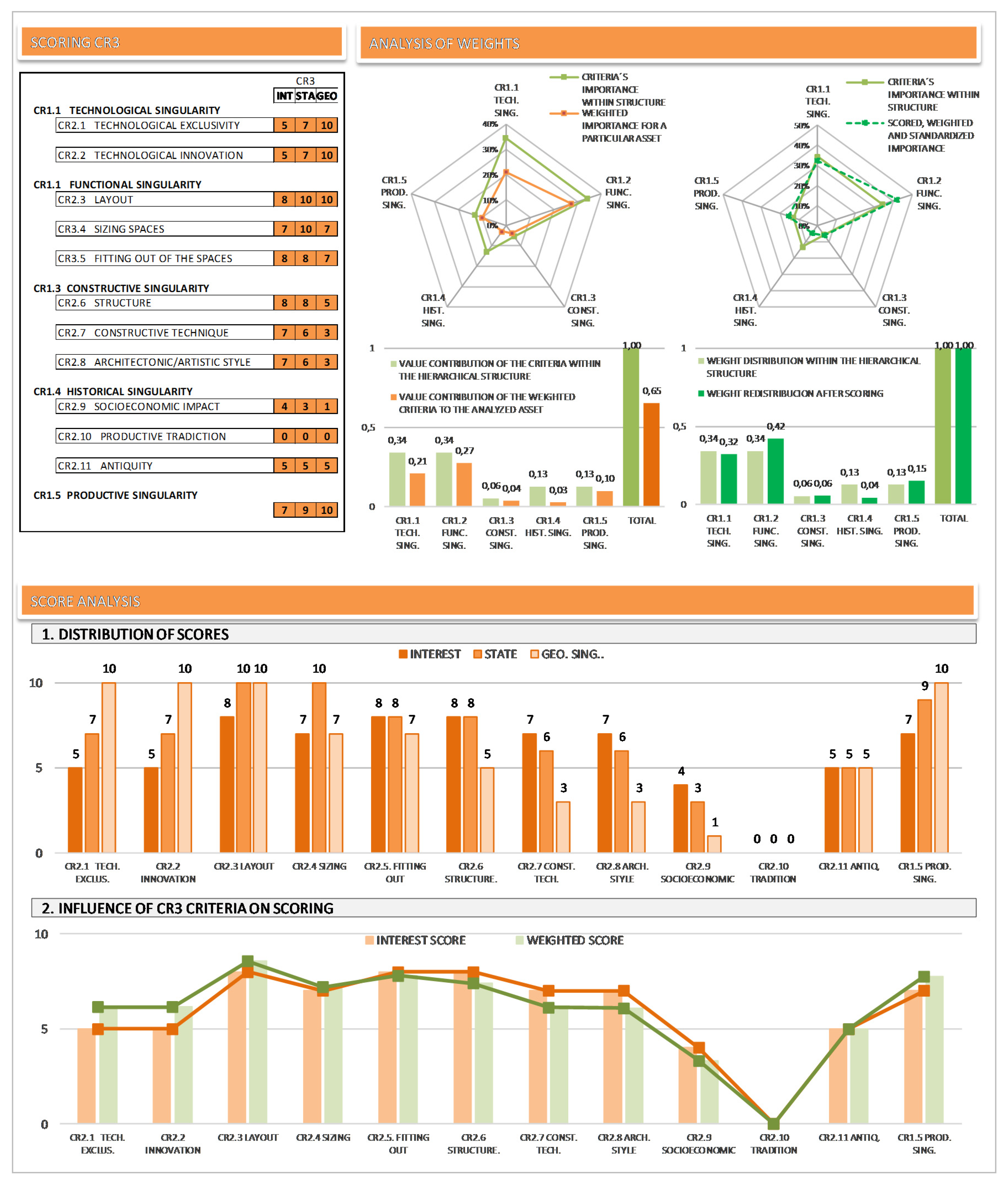
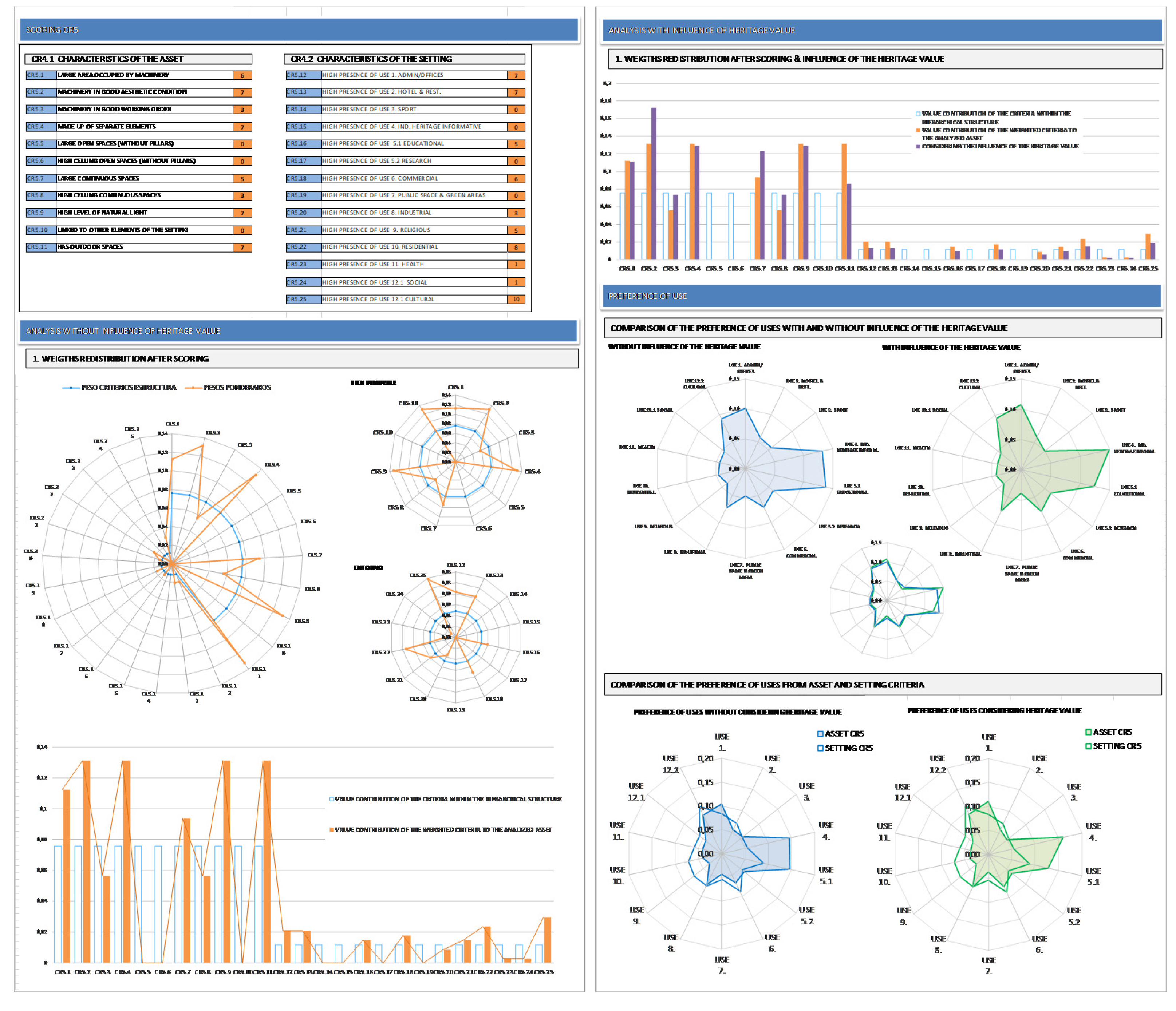
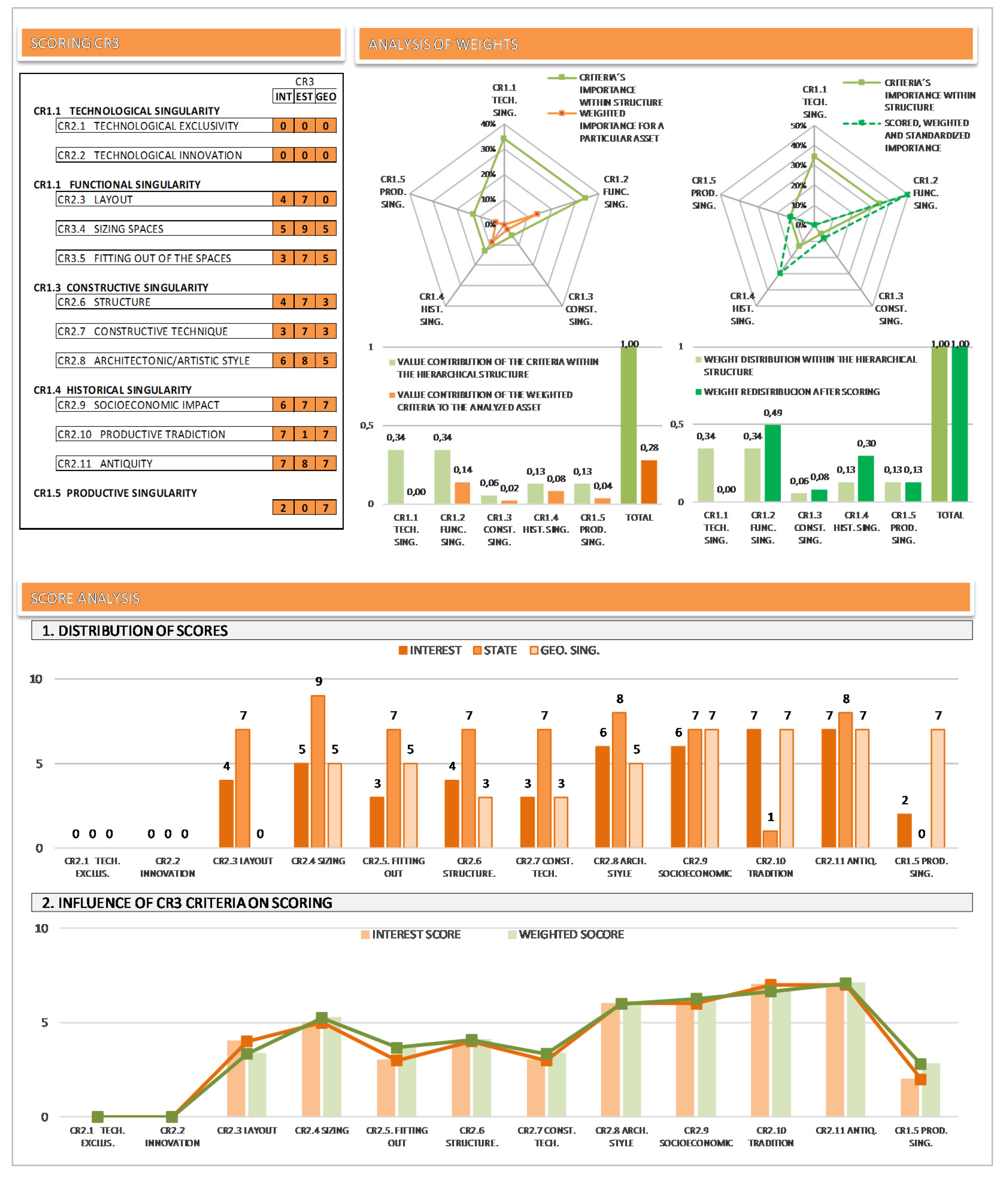
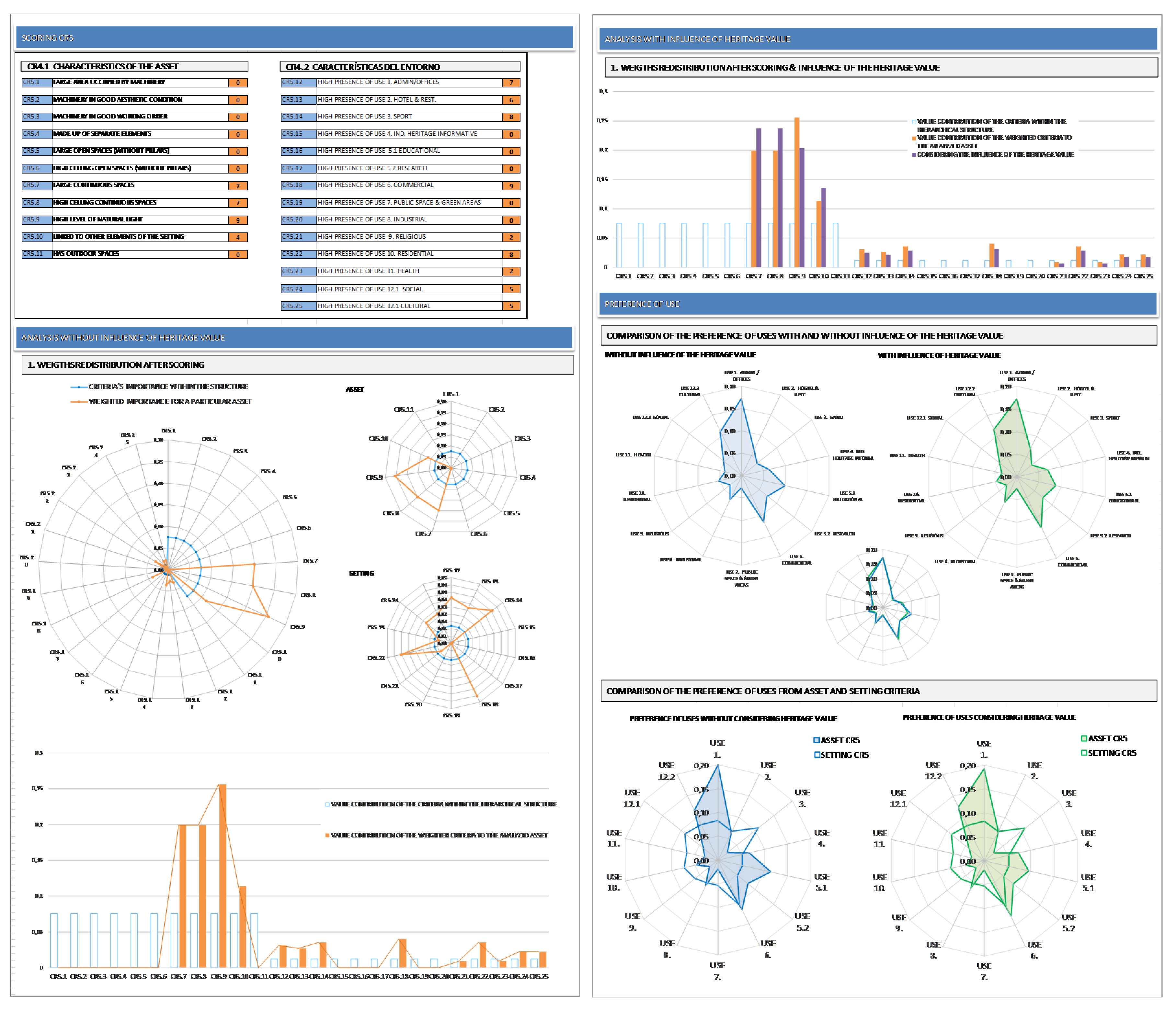
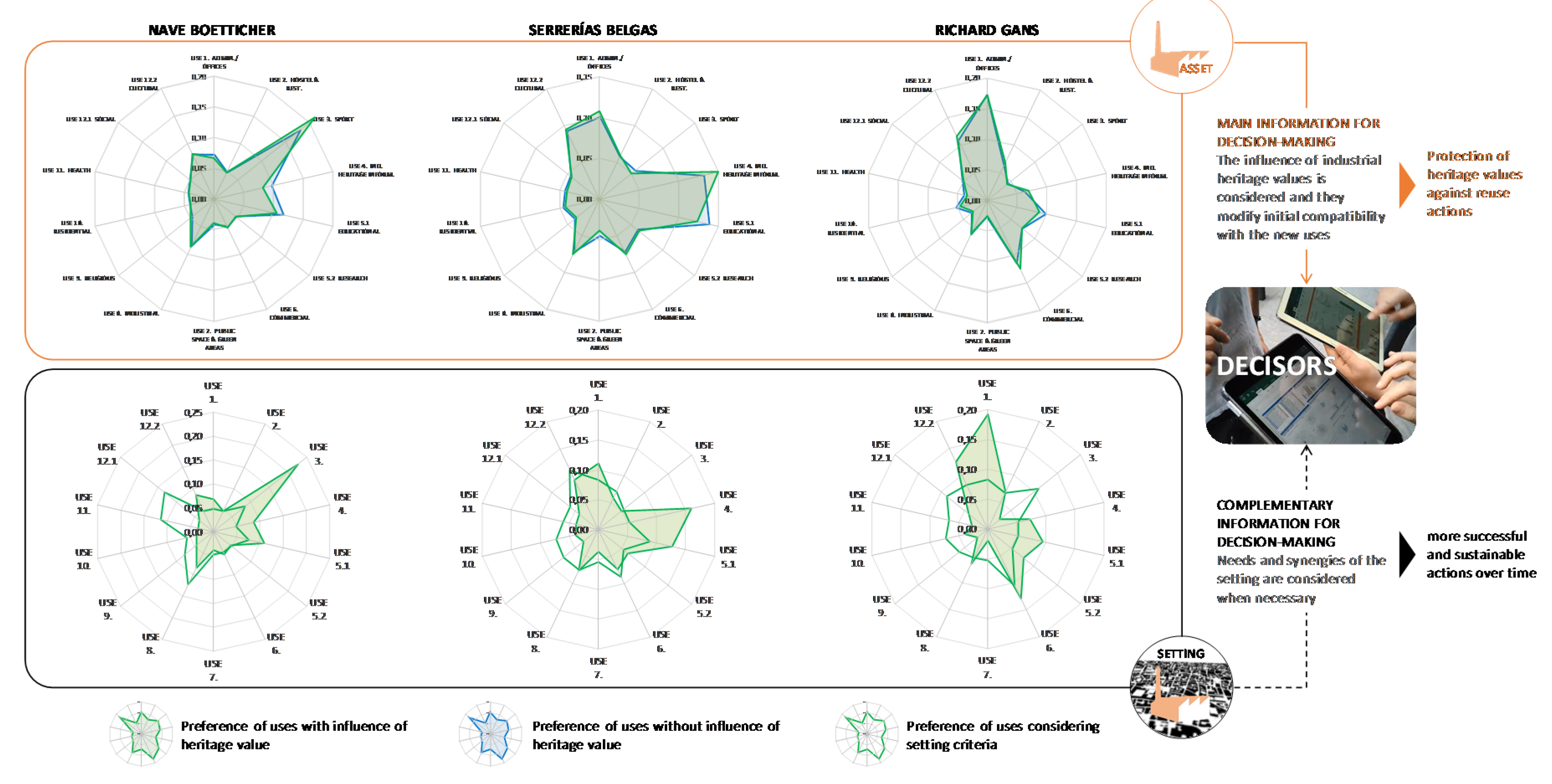
© 2020 by the authors. Licensee MDPI, Basel, Switzerland. This article is an open access article distributed under the terms and conditions of the Creative Commons Attribution (CC BY) license (http://creativecommons.org/licenses/by/4.0/).
Share and Cite
Claver, J.; García-Domínguez, A.; Sebastián, M.A. Multicriteria Decision Tool for Sustainable Reuse of Industrial Heritage into Its Urban and Social Environment. Case Studies. Sustainability 2020, 12, 7430. https://doi.org/10.3390/su12187430
Claver J, García-Domínguez A, Sebastián MA. Multicriteria Decision Tool for Sustainable Reuse of Industrial Heritage into Its Urban and Social Environment. Case Studies. Sustainability. 2020; 12(18):7430. https://doi.org/10.3390/su12187430
Chicago/Turabian StyleClaver, Juan, Amabel García-Domínguez, and Miguel A. Sebastián. 2020. "Multicriteria Decision Tool for Sustainable Reuse of Industrial Heritage into Its Urban and Social Environment. Case Studies" Sustainability 12, no. 18: 7430. https://doi.org/10.3390/su12187430
APA StyleClaver, J., García-Domínguez, A., & Sebastián, M. A. (2020). Multicriteria Decision Tool for Sustainable Reuse of Industrial Heritage into Its Urban and Social Environment. Case Studies. Sustainability, 12(18), 7430. https://doi.org/10.3390/su12187430






